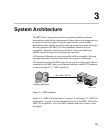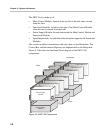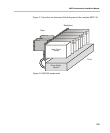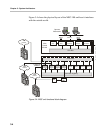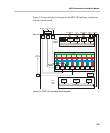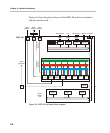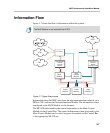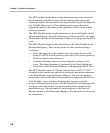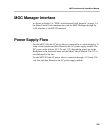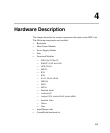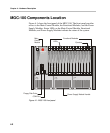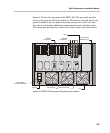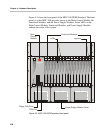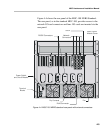
Chapter 3 - System Architecture
3-8
The MUX module divides the incoming information into audio, video and
data components, and then forwards the information to the appropriate
functional module. The information arriving at the MUX ports is multiplexed
into Nx56/64 Kbps channels. These channels can be hyperchannels or
aggregated channels, depending on the capabilities of the network and the
receiving terminals.
The MUX Module transfers audio information to the Audio Module via the
Information Highway. The audio information is then processed by the Audio
Module and forwarded via the Information Highway to the appropriate MUX
ports.
The MUX Module transfers video information to the Video Module via the
Information Highway. There are two modes of video operation during a
conference:
• Video Switching, where the speaker is the only person shown on the
screen. The MUX module broadcasts the video of the current speaker to
all sites involved in the conference.
• Continuous Presence, where several participants are shown on the
screen. The video information is processed by the Video Module and
forwarded via the Information Highway to the appropriate MUX Ports.
The MUX Module transfers T.120 data (which follows the ITU-T T.120
standard for data transfer and application sharing in a multipoint conference)
to the Data Module via the Information Highway. The data information is
processed by the Data Module and forwarded to the appropriate MUX Ports.
After the audio, video, and data information has been processed, the
processed information flows back to the MUX module for multiplexing, after
which it is sent to the network via the Network Interface module and the
Input/Output card. This information is then transferred to the Network
Interface module via the Information Highway. The information is then ready
for transmission.




